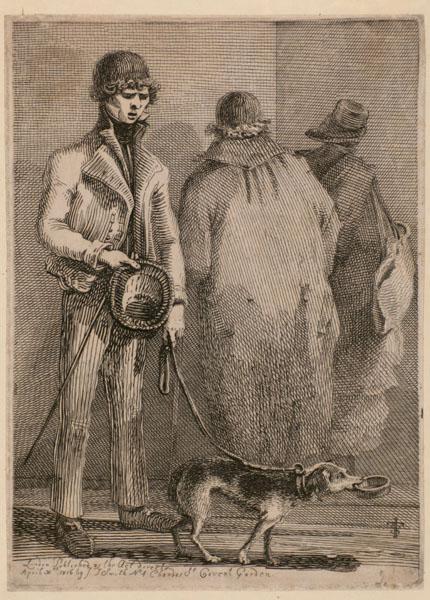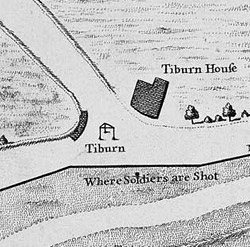|
John Thomas Smith (1766–1833)
John Thomas Smith, also known as Antiquity Smith (1766–1833), was an English painter, engraver and antiquarian. He wrote a life of the sculptor Joseph Nollekens, that was noted for its "malicious candour", and was a keeper of prints for the British Museum. Biography John Thomas Smith was born in the back of a Hackney carriage on 23 June 1766. His mother was returning home to 7 Great Portland Street. He was named John for his grandfather and Thomas after his great uncle, Thomas Smith (Royal Navy officer, died 1762), Admiral Thomas Smith.Obituary ''Gentleman's Magazine'', 1833, accessed August 2010 His father Nathaniel Smith was at that time a sculptor working for Joseph Nollekens, but later became a printseller. John Thomas Smith first tried to train as a sculptor with Nollekens, but left to study with John Keyse S ... [...More Info...] [...Related Items...] OR: [Wikipedia] [Google] [Baidu] |
William Skelton
William Skelton (1763–1848) was an English engraver. Life He was born in London on 14 June 1763, the brother of the engraver Joseph John Skelton, Joseph Skelton. He studied in the schools of the Royal Academy, and was a pupil first of James Basire and later of William Sharp (engraver), William Sharp, becoming a line engraver. Skelton resided for many years at Stafford Place, Pimlico, London, and afterwards in Upper Ebury Street, where he died on 13 August 1848, having long previously retired. For fifty years he served on the committee of the Female Orphan Asylum. Works Skelton was employed on the illustrations of many of the fine publications of the day: John Boydell's ''Shakespeare'', Thomas Macklin's Bible, Robert Bowyer's edition of David Hume's ''History of England'', John Sharpe's ''British Classics'', ''Lord Macartney's Embassy to China'', 1797, the ''Museum Worsleyanum'' of Sir Richard Worsley, 7th Baronet, Richard Worsley, ''Ancient Marbles in the British Museum'', and ... [...More Info...] [...Related Items...] OR: [Wikipedia] [Google] [Baidu] |
William Beechey
Sir William Beechey (12 December 175328 January 1839) was a British portraitist during the golden age of British painting. Early life Beechey was born at Burford, Oxfordshire, on 12 December 1753, the son of William Beechey, a solicitor, and his wife Hannah Read. Both parents died when he was still quite young in the early 1760s, and he and his siblings were brought up by his uncle Samuel, a solicitor who lived in nearby Chipping Norton. The uncle was determined that the young Beechey should likewise follow a career in the law, and at an appropriate age he was entered as a clerk with a conveyancer near Stow-on-the-Wold. But as '' The Monthly Mirror'' later recorded in July 1798, he was: "Early foredoomed his ncle'ssoul to cross/ And paint a picture where he should engross". Career Beechey was admitted to the Royal Academy Schools in 1772, where he is thought to have studied under Johan Zoffany. He first exhibited at the Academy in 1776. His earliest surviving portraits ar ... [...More Info...] [...Related Items...] OR: [Wikipedia] [Google] [Baidu] |
1833 Deaths
Events January–March * January 3 – The United Kingdom reasserts British sovereignty over the Falkland Islands in the South Atlantic Ocean. * February 6 (January 25 on the Greek calendar) – Prince Otto Friedrich Ludwig of Bavaria arrives at the port of Nafplio to assume the title King Othon the First of Greece * February 16 – The United States Supreme Court hands down its landmark decision of Barron v. Mayor and City Council of Baltimore. April–June * April 1 – General Antonio López de Santa Anna is elected President of Mexico by the legislatures of 16 of the 18 Mexican states. During his frequent absences from office to fight on the battlefield, Santa Anna turns the duties of government over to his vice president, Valentín Gómez Farías. * April 18 – Over 300 delegates from England, Scotland, Wales and Ireland travel to the office of the Prime Minister, the Earl Grey, to call for the immediate abolition of slavery throughout the British Empire. * Ma ... [...More Info...] [...Related Items...] OR: [Wikipedia] [Google] [Baidu] |
1766 Births
Events January–March * January 1 – Charles Edward Stuart ("Bonnie Prince Charlie") becomes the new Stuart claimant to the throne of Great Britain, as King Charles III, and figurehead for Jacobitism. * January 14 – Christian VII becomes King of Denmark-Norway. * January 20 – Burmese–Siamese War: Outside of the walls of the Thailand capital of Ayutthaya, tens of thousands of invaders from Burma (under the command of General Ne Myo Thihapate and General Maha Nawatra) are confronted by Thai defenders led by General Phya Taksin. The defenders are overwhelmed and the survivors take refuge inside Ayutthaya. The siege continues for 15 months before the Burmese attackers collapse the walls by digging tunnels and setting fire to debris. The city falls on April 9, 1767, and King Ekkathat is killed. * February 5 – An observer in Wilmington, North Carolina reports to the Edinburgh newspaper ''Caledonian Mercury'' that three ships have been seize ... [...More Info...] [...Related Items...] OR: [Wikipedia] [Google] [Baidu] |
Nollekens And His Times
Joseph Nollekens R.A. (11 August 1737 – 23 April 1823) was a sculptor from London generally considered to be the finest British sculptor of the late 18th century. Life Nollekens was born on 11 August 1737 at 28 Dean Street, Soho, London, the son of the Flemish painter Josef Frans Nollekens (1702–1748) who had moved from Antwerp to London in 1733. He studied first under another Flemish immigrant in London, the sculptor Peter Scheemakers, before studying and working as an antiques dealer, restorer and copier in Rome from 1760 or 1762. The sculptures he made in Rome included a marble of ''Timocles Before Alexander'', for which he was awarded fifty guineas by the Society of Arts, and busts of Laurence Sterne and David Garrick, who were visiting the city. On his return to London in 1770 he set up as a maker of busts and monuments at 9, Mortimer Street, where he built up a large practice. Although he preferred working on mythological subjects, it was through his portrait b ... [...More Info...] [...Related Items...] OR: [Wikipedia] [Google] [Baidu] |
Internet Archive
The Internet Archive is an American 501(c)(3) organization, non-profit organization founded in 1996 by Brewster Kahle that runs a digital library website, archive.org. It provides free access to collections of digitized media including websites, Application software, software applications, music, audiovisual, and print materials. The Archive also advocates a Information wants to be free, free and open Internet. Its mission is committing to provide "universal access to all knowledge". The Internet Archive allows the public to upload and download digital material to its data cluster, but the bulk of its data is collected automatically by its web crawlers, which work to preserve as much of the public web as possible. Its web archiving, web archive, the Wayback Machine, contains hundreds of billions of web captures. The Archive also oversees numerous Internet Archive#Book collections, book digitization projects, collectively one of the world's largest book digitization efforts. ... [...More Info...] [...Related Items...] OR: [Wikipedia] [Google] [Baidu] |
Rule Of Thirds
The rule of thirds is a rule of thumb for composing visual art such as designs, films, paintings, and photographs. The guideline proposes that an image should be imagined as divided into nine equal parts by two equally spaced horizontal lines and two equally spaced vertical lines, and that important compositional elements should be placed along these lines or their intersections. Aligning a subject with these points creates more tension, energy and interest in the composition than simply centering the subject. Use The rule of thirds is applied by aligning a subject with the guide lines and their intersection points, placing the horizon on the top or bottom line, or allowing linear features in the image to flow from section to section. The main reason for observing the rule of thirds is to discourage placement of the subject at the center, or prevent a horizon from appearing to divide the picture in half. Michael Ryan and Melissa Lenos, authors of the book ''An Introduction to F ... [...More Info...] [...Related Items...] OR: [Wikipedia] [Google] [Baidu] |
Charles Mackay (author)
Charles Mackay (27 March 1814 – 24 December 1889) was a Scottish poet, journalist, author, anthologist, novelist, and songwriter, remembered mainly for his book ''Extraordinary Popular Delusions and the Madness of Crowds''. Early life Charles Mackay was born in Perth. His father, George Mackay, was a bombardier in the Royal Artillery, and his mother Amelia Cargill died shortly after his birth. Mackay was educated at the Caledonian Asylum, in London. In 1828 he was placed by his father at a school in Brussels, on the Boulevard de Namur, shortly taken over by William James Joseph Drury; and studied languages. In 1830 he was engaged as a private secretary to William Cockerill, the ironmaster, near Liège, began writing in French in the ''Courrier Belge'', and sent English poems to a local newspaper called ''The Telegraph''. In the summer of 1830 he visited Paris, and he spent 1831 with Cockerill at Aix-la-Chapelle. In May 1832 his father brought him back to London, where ... [...More Info...] [...Related Items...] OR: [Wikipedia] [Google] [Baidu] |
John Bowyer Nichols
John Bowyer Nichols (15 July 1779 – 19 October 1863) was an English printer and antiquary. Life Nichols was born at Red Lion Passage, Fleet Street, London, on 15 July 1779. He was the eldest son of John Nichols, by his second wife, Martha Green (1756–1788). He spent his early years with his maternal grandfather at Hinckley, Leicestershire, and was educated at St Paul's School, London, which he left in September 1796 to enter his father's printing office. Career He had a part in the editorship of the ''Gentleman's Magazine'', and contributed under the initials J. B. N., or N. R. S. (the final letters of his name). He became the sole proprietor of the magazine in 1833, and in the following year transferred a share to William Pickering of Piccadilly. This share he subsequently repurchased, and in 1856 conveyed the whole property to John Henry Parker of Oxford. The printing firm became J. Nichols, Son, & Bentley, with an office at the Cicero's Head, Red Lion Passage, Flee ... [...More Info...] [...Related Items...] OR: [Wikipedia] [Google] [Baidu] |
Toll Road
A toll road, also known as a turnpike or tollway, is a public or private road for which a fee (or ''Toll (fee), toll'') is assessed for passage. It is a form of road pricing typically implemented to help recoup the costs of road construction and Road maintenance, maintenance. Toll roads have existed in some form since Classical antiquity, antiquity, with tolls levied on passing travelers on foot, wagon, or horseback; a practice that continued with the automobile, and many modern tollways charge fees for motor vehicles exclusively. The amount of the toll usually varies by vehicle type, weight, or number of axles, with freight trucks often charged higher rates than cars. Tolls are often collected at toll plazas, toll booths, toll houses, toll stations, toll bars, toll barriers, or toll gates. Some toll collection points are automatic, and the user deposits money in a machine which opens the gate once the correct toll has been paid. To cut costs and minimise time delay, many tolls ... [...More Info...] [...Related Items...] OR: [Wikipedia] [Google] [Baidu] |
Tyburn
Tyburn was a Manorialism, manor (estate) in London, Middlesex, England, one of two which were served by the parish of Marylebone. Tyburn took its name from the Tyburn Brook, a tributary of the River Westbourne. The name Tyburn, from Teo Bourne (stream), Bourne, means 'boundary stream'.Gover, J. E. B., Allen Mawer and F. M. Stenton ''The Place-Names of Middlesex''. Nottingham: English Place-Name Society, The, 1942: 6. The parish, and probably therefore also the manor, was bounded by Roman roads to the west (modern Edgware Road) and south (modern Oxford Street). The junction of these was the site of the famous Tyburn Gallows (known colloquially as the "Tyburn Tree"), now occupied by Marble Arch. For many centuries the name Tyburn was synonymous with capital punishment: it was the principal place for execution for London and Middlesex criminals and convicted Treason, traitors, including many religious martyrs. In the 18th century it was also known as "God's Tribunal". Hangings at ... [...More Info...] [...Related Items...] OR: [Wikipedia] [Google] [Baidu] |
St George's Fields, Westminster
St George's Fields are a former burial ground of St George's, Hanover Square, lying between Connaught Street and Bayswater Road in Tyburnia deconsecrated and sold off by the Church Commissioners in the 1970s to be built upon by The Utopian Housing Association, a housing trust. The architects, Design 5, used a ziggurat style of building (similar to the Brunswick by Patrick Hodgkinson), retaining much of the open space whilst creating 300 dwellings. Parts of the double walls surrounding the burial ground - reputedly designed to frustrate grave robbers - have been preserved along with a number of tombstones. The burial ground was also used for years as an archery ground, hence the nearby Archery Close and one of the new buildings being called Archery Steps. The estate is now in private ownership although the grounds of St George's Fields are opened to the public once a year under the London Garden Square Scheme when one of London's oldest plane trees, with a girth of over , ... [...More Info...] [...Related Items...] OR: [Wikipedia] [Google] [Baidu] |








